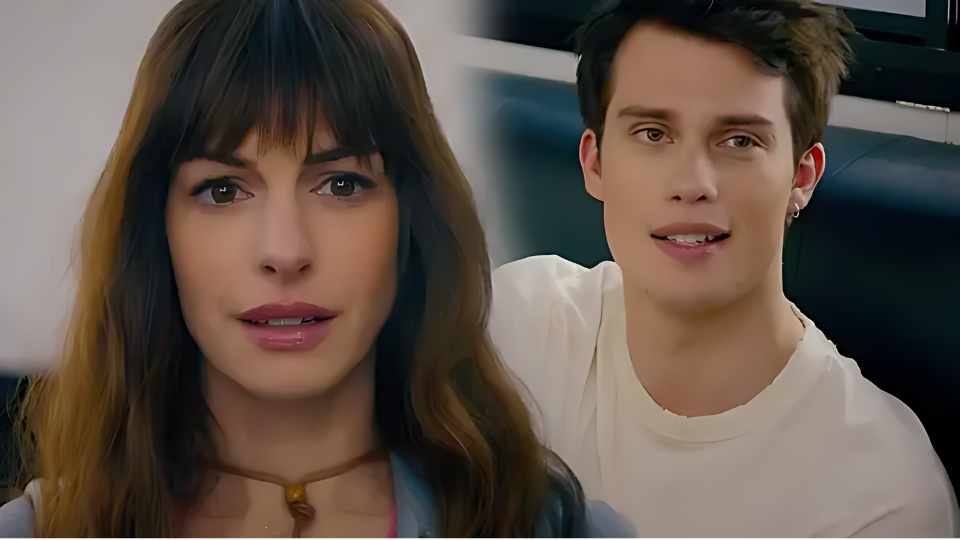In analyzing Robinne Lee’s assertion that reducing “The Idea of You” to fan fiction dismisses women’s art, several key points emerge. Firstly, Lee’s novel was born out of a desire to explore themes of ageism, sexism, the double standard, motherhood, female friendship, agency, and the dark side of celebrity, particularly in the context of a midlife sexual awakening. She aimed to challenge societal assumptions about women’s desirability and worth as they age, using her protagonist Solène Marchand’s journey as a lens for examination.
Also Check – 10 Amazing Facts About “The Idea of You” The Romantic Drama of 2024

Despite Lee’s intentions, some readers have trivialized her work by categorizing it as romance or dismissing it as “fluff.” This response overlooks the depth and complexity of the themes Lee intended to address, focusing instead on the love story and sexual elements. This reductionism, compounded by marketing and preconceived notions, undermines the significance of women’s stories and reinforces gender stereotypes.
Lee’s frustration extends to the broader literary landscape, where works by women are often undervalued and categorized differently from those by men. Male-authored first-person narratives, for example, are often seen as serious literature, while similar works by women may be dismissed as merely memoir or autofiction. This inequity reflects a systemic bias that undermines the complexity and importance of women’s contributions to literature.
Moreover, Lee highlights the tendency to devalue art targeted at women, relegating it to the realm of “beach reads” or dismissing it as juvenile. This contrasts sharply with the treatment of male-authored fiction, which is rarely subjected to such reductionism or categorization.
In conclusion, Lee argues that reducing “The Idea of You” to fan fiction or dismissing it as “fluff” reflects broader societal attitudes that devalue women’s art and reinforce gender stereotypes. By overlooking the novel’s thematic depth and complexity, readers miss out on its potential to provoke thought and inspire reflection on issues relevant to women’s lives
The ending of “The Idea of You”

The ending of “The Idea of You” both in the book and the film holds significance in the narrative, but they differ in their execution and impact. Let’s delve into the differences between the two and analyze how they affect the overall story.
The Book Ending: In Robinne Lee’s novel, the story concludes with a sense of ambiguity. Solène, the protagonist, and Hayes, the young heartthrob, share a deep connection throughout the book. However, their romance is complicated by their age difference, public scrutiny, and Hayes’ career. The ending leaves readers wondering about the future of their relationship. Solène makes a significant decision to prioritize her own happiness and self-worth over societal expectations, but it’s unclear if that means a future with Hayes or not.
The Film Ending: Director Michael Showalter took creative liberties with the ending in the film adaptation. While the essence of the story remains intact, the conclusion provides more closure compared to the book. Without spoiling too much, the film’s ending offers a more definitive resolution to Solène and Hayes’ relationship, giving audiences a clearer picture of their fate.
Analysis:
- Closure vs. Ambiguity: The book’s ambiguous ending allows readers to interpret the story’s conclusion in their own way. It encourages speculation and discussion about the characters’ future, leaving room for imagination. On the other hand, the film’s ending provides closure, answering some of the questions raised throughout the story. This change caters to the different demands of the mediums; while ambiguity might work well in literature, films often aim for more concrete resolutions.
- Audience Expectations: The decision to alter the ending could be influenced by the expectations of the audience. Moviegoers often prefer neatly tied-up endings, especially in romantic comedies, where closure is key. By providing a clearer resolution, the film adaptation may satisfy viewers who seek closure and emotional fulfillment from the story.
- Character Development: The different endings also affect how we perceive the characters’ development. In the book, Solène’s decision to prioritize her own happiness despite societal norms shows strength and growth. In the film, this decision may be reinforced or challenged depending on how her story concludes. Similarly, Hayes’ character arc may vary in significance depending on whether his relationship with Solène is left open-ended or resolved definitively.
- Authorial Intent vs. Adaptation Choices: While Robinne Lee’s intent with the original ending is significant, the adaptation process involves collaboration and interpretation by multiple creatives. Michael Showalter’s decision to change the ending reflects his vision for the film and how he believes the story should conclude on screen. This shift may aim to appeal to a broader audience or to enhance the cinematic experience.
In conclusion, the differences between the book and film endings of “The Idea of You” offer unique experiences for audiences. While the book’s ambiguous ending allows for interpretation and speculation, the film’s more definitive conclusion provides closure and emotional resolution. Both endings have their merits, catering to different preferences and storytelling mediums.


















